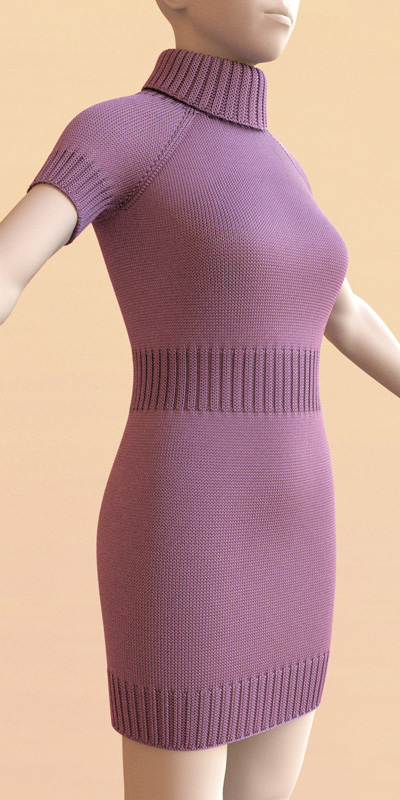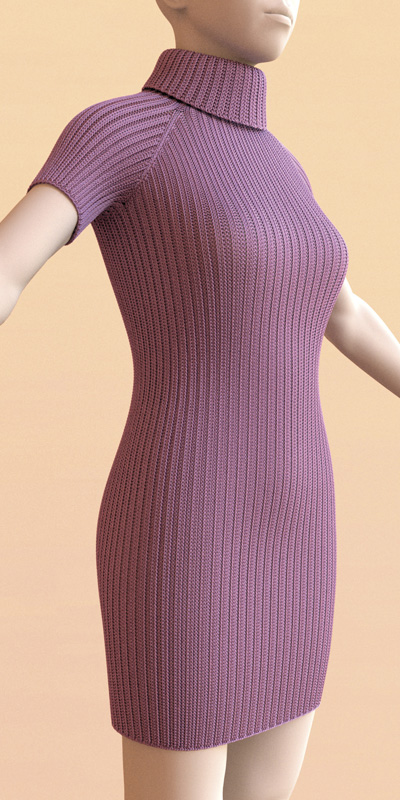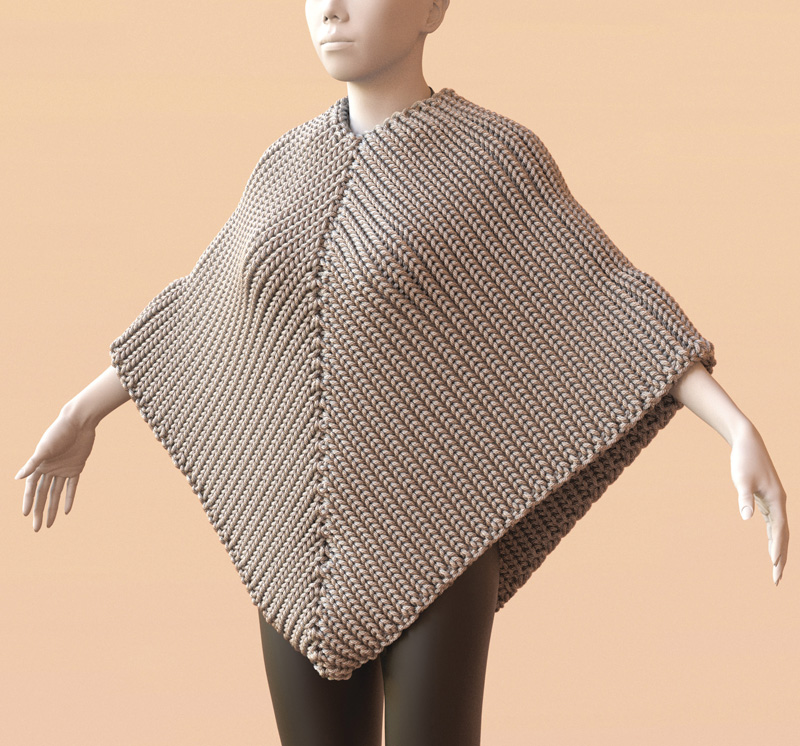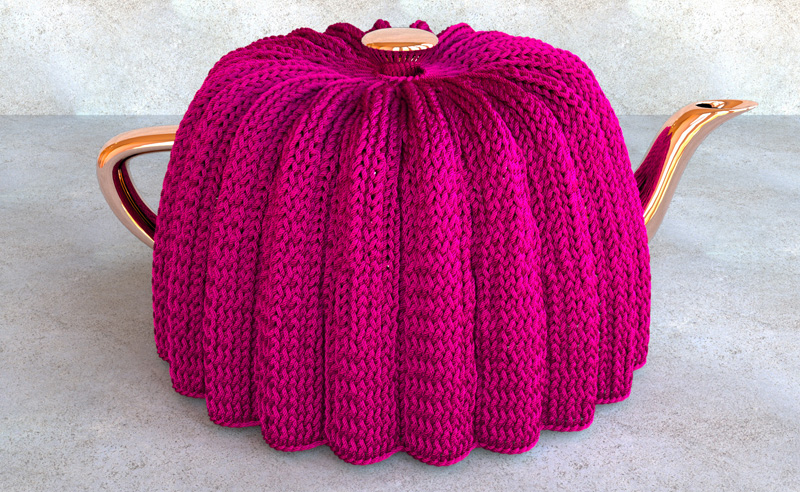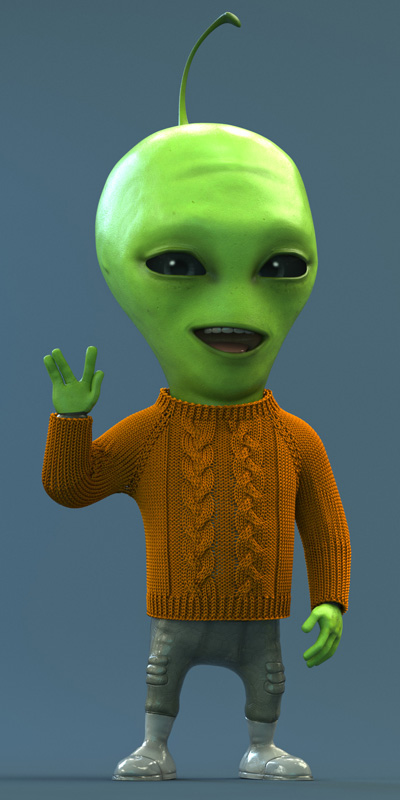Stitch Meshes for Modeling Knitted Clothing with Yarn-level Detail
| Cem Yuksel | Jonathan M. Kaldor | Doug L. James | Steve Marschner |

Stages of our knitted garment modeling system: (a) We begin our interactive modeling process with a polygonal mesh that
specifies the global shape of the cloth model; (b) using this polygonal mesh we produce a high-resolution stitch mesh that serves as a
canvas-like abstraction of the yarn model; (c) then, we specify the desired knitting pattern over the stitch mesh’s surface. (d) Following the
interactive modeling process, the model goes through offline relaxation, beginning with a mesh-based relaxation that moves the stitch mesh to
the subdivision surface of the input model and slides its vertices over this surface based on the topology of the knitting pattern; finally, (e) we
generate the yarn curves and (f) use a physically based relaxation process at the yarn level to compute the final realistic shape.
Abstract:
Recent yarn-based simulation techniques permit realistic and efficient dynamic simulation of knitted clothing, but producing the required yarn-level models remains a challenge. The lack of practical modeling techniques significantly limits the diversity and complexity of knitted garments that can be simulated. We propose a new modeling technique that builds yarn-level models of complex knitted garments for virtual characters. We start with a polygonal model that represents the large-scale surface of the knitted cloth. Using this mesh as an input, our interactive modeling tool produces a finer mesh representing the layout of stitches in the garment, which we call the \emph{stitch mesh}. By manipulating this mesh and assigning stitch types to its faces, the user can replicate a variety of complicated knitting patterns. The curve model representing the yarn is generated from the stitch mesh, then the final shape is computed by a yarn-level physical simulation that locally relaxes the yarn into realistic shape while preserving global shape of the garment and avoiding ``yarn pull-through,'' thereby producing valid yarn geometry suitable for dynamic simulation. Using our system, we can efficiently create yarn-level models of knitted clothing with a rich variety of patterns that would be completely impractical to model using traditional techniques. We show a variety of example knitting patterns and full-scale garments produced using our system.
Publication:
Cem Yuksel, Jonathan M. Kaldor, Doug L. James, and Steve Marschner. 2012. Stitch Meshes for Modeling Knitted Clothing with Yarn-level Detail, ACM Transactions on Graphics (Proc. of SIGGRAPH 2012), 31, 3, 37
Preprint PDF (9 MB) | High Resolution Preprint PDF (22 MB) | MP4 Video (858 MB) | Youtube Video
Video:
Images:
Acknowledgements:
We would like to thank Alexander Tomchuk (sweater and dress examples) and Rune Spaans (sheep and alien examples) for the input models and their help, Christer Sveen for the alien character, Deborah Dawson for knitting the patterns, Wenzel Jakob for Mitsuba, Manuel Vargas for the volume generation code, and anonymous reviewers for their feedback during the SIGGRAPH 2012 technical paper review process.
This material is based upon work supported by the National Science Foundation under Grant #1019343 to the Computing Research Association for the CIFellows Project. This work was supported in part by the National Science Foundation grants HCC- 0905506 and IIS-1011919, fellowships from the Alfred P. Sloan Foundation and the John Simon Guggenheim Memorial Foundation, Pixar, and software donations from Autodesk. This research was conducted in conjunction with the Intel Science and Tech. Center - Visual Computing. Any opinions, findings, and conclusions or recommendations expressed in this material are those of the authors and do not necessarily reflect the views of the National Science Foundation or others.
Links:
- Stitch Meshes on Cem Yuksel's web site
- Mitsuba -- the physically based renderer we used for rendering our results.

